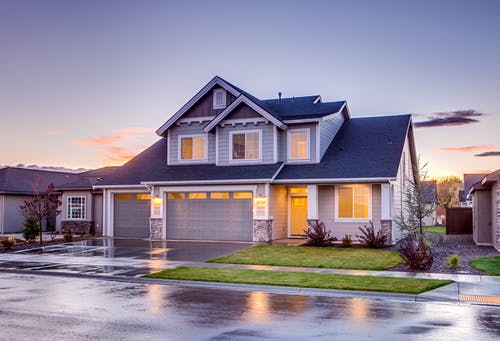Property damage is an unfortunate yet common occurrence that can disrupt both residential and commercial settings. Understanding the causes behind such damage is crucial for effective prevention and timely restoration. Various factors, including natural disasters, human activities, and environmental conditions, can lead to significant property damage.
Natural disasters such as floods, hurricanes, and earthquakes are among the most devastating, often causing widespread destruction and necessitating extensive restoration efforts. Property damage that requires restoration can result from a variety of causes. Here are some of the most common:
1. Water Damage
Water damage is a prevalent issue that can arise from numerous sources, including natural disasters, plumbing failures, appliance malfunctions, and roof leaks. One notable example is the Canyon Lake restoration project, which addressed the extensive damage caused by flooding and debris accumulation. Flooding from heavy rains, hurricanes, or overflowing rivers can lead to extensive water infiltration, damaging walls, floors, and personal belongings. Burst pipes, leaking faucets, and faulty plumbing systems can cause significant damage to the structural integrity of a property. Appliances like washing machines, dishwashers, and water heaters can also malfunction, leading to leaks and flooding.
2. Fire Damage
Fire damage can be catastrophic, often requiring extensive restoration efforts to repair the affected property. Common causes of fires include electrical malfunctions, cooking accidents, and issues with heating equipment. Faulty wiring, overloaded circuits, or malfunctioning electrical devices can ignite fires that spread rapidly. Kitchen fires, a frequent occurrence, can cause severe damage before being controlled. Improper use or malfunction of heating equipment, such as space heaters or fireplaces, can also lead to fires. When facing such extensive fire damage, seeking professional San Marcos restoration services is crucial to ensure your property is effectively restored to its pre-damage condition.
3. Mold Infestation
Mold infestations are often the result of persistent moisture problems within a property, posing health risks and causing significant damage. Water leaks from pipes, roofs, or windows create damp environments conducive to mold growth. High indoor humidity, often due to poor ventilation, can further promote mold proliferation, particularly in areas like bathrooms and basements. After flooding, if a property is not adequately dried, mold can quickly take hold, spreading through walls, floors, and personal belongings. Addressing mold issues requires thorough drying, cleaning, and often structural repairs to eliminate the problem and prevent recurrence.
4. Storm Damage
Severe weather conditions can cause a wide range of property damage, often requiring professional restoration services. Strong winds can tear off roofs, break windows, and damage exterior structures like fences and sheds. Hailstorms pose another threat, with hailstones denting roofs, damaging siding, and breaking windows. Lightning strikes during storms can cause fires, electrical damage, and power surges that harm appliances and electrical systems. The cumulative effect of these storm-related damages can be extensive, necessitating comprehensive restoration efforts to repair and protect the property.
5. Vandalism and Break-Ins
Intentional damage from vandals or intruders can lead to significant restoration needs. Forced entry often results in broken windows, doors, and locks that require immediate repair to secure the property. Vandalism can also involve graffiti and other forms of defacement that need professional cleaning and restoration to remove. In more severe cases, vandals may cause structural damage that requires extensive repairs to restore the property to its original state. Addressing vandalism and break-in damage promptly is crucial to maintaining the property’s security and aesthetic appeal.
6. Natural Disasters
Natural disasters such as earthquakes, tornadoes, and hurricanes can inflict severe and widespread damage on properties. Earthquakes can cause structural damage, including cracked foundations and broken utilities, making buildings unsafe. With their powerful winds, tornadoes can destroy buildings, uproot trees, and scatter debris, causing extensive damage. The aftermath of these natural disasters often requires comprehensive restoration from New Braunfels restoration specialists, who work to rebuild and secure properties, ensuring they are safe for occupancy once more.
7. Accidental Damage
Accidents within or around the property can necessitate restoration services to repair unexpected damage. Vehicle impacts, such as cars crashing into garages or storefronts, can cause significant structural damage that requires immediate attention. Falling objects, like trees or branches during storms or due to decay, can damage roofs and walls, leading to potential water ingress and further complications. Addressing accidental damage promptly helps maintain the property’s structural integrity and prevents further issues from arising.
8. Pest Infestations
Pest infestations can cause immediate and long-term property damage, requiring professional intervention. Termites are particularly destructive, compromising the structural integrity of wooden buildings as they consume wood from the inside out. Rodents like rats and mice can chew through wiring, insulation, and structural elements, leading to damage and potential fire hazards. Insects like carpenter ants can cause damage similar to termites, creating tunnels in wooden structures. Effective pest control and subsequent restoration efforts are essential to repair the damage and prevent future infestations.
Wrapping Up
Property damage can arise from myriad sources, each with its unique challenges and implications for restoration. Natural disasters like floods, hurricanes, and earthquakes are often unavoidable but can be mitigated through preparedness and resilient construction practices. Human-related factors such as fires, plumbing issues, and vandalism require vigilant maintenance, safety protocols, and, where possible, advanced technological measures to detect and prevent incidents.

